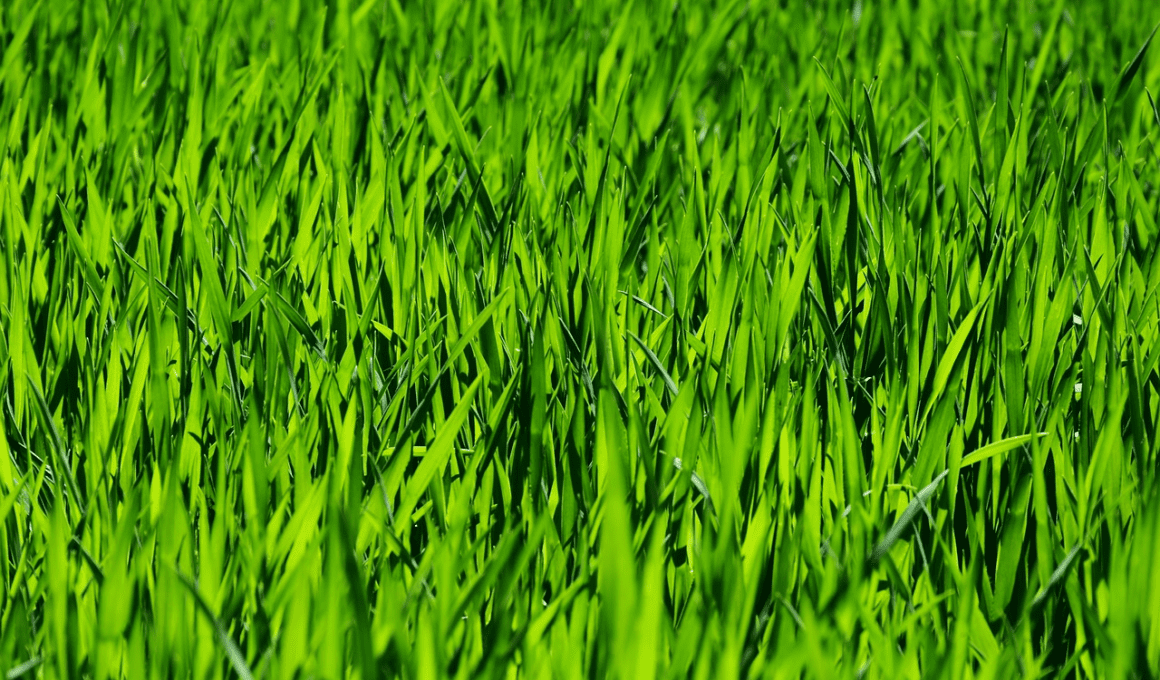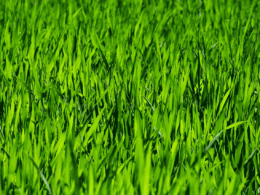Are you tired of looking at a dull and lifeless lawn? Do you long for a lush green carpet of grass that looks like it belongs in a magazine? Well, you’re in luck because in this article, we’re going to show you how to get green grass fast with simple and easy-to-follow tips.
First things first, it’s important to understand why your grass is yellow and lackluster in the first place. There could be a number of reasons such as over or under-watering, improper fertilization, or even soil deficiencies. But don’t worry, we’ll cover all of these issues and more to ensure that you can achieve the perfect lawn in no time.
So, grab your gardening gloves and let’s get started on the path to a healthier, greener lawn that you can be proud of.
Quick Takeaways
- Regular maintenance, including mowing, fertilizing, watering, and aerating, is crucial for a healthy lawn
- Test soil for nutrient deficiencies and pH imbalances, and choose the appropriate fertilizer to address any issues
- Yellow or lackluster grass can be caused by a variety of factors, including low iron levels, nutrient deficiencies, and improper mowing or watering
- Organic fertilizers are a safer option for both the lawn and the environment, but may take longer to see results compared to chemical fertilizers.
Causes of Yellow Grass
If your lawn is looking yellow, you may need to check the iron levels in the soil, as low iron can slow chlorophyll production and lead to yellowing grass.
Lack of iron is just one of many reasons your grass may be turning yellow. Nutrient deficiencies, grass diseases, soil pH imbalance, excessive heat, overwatering, poor drainage, pet urine damage, mowing too short, and using the wrong type of fertilizer can all contribute to yellowing grass.
To determine the cause of your yellow grass, start by testing your soil for nutrient deficiencies or pH imbalances. If the soil is lacking in iron, consider adding an iron supplement to your lawn care routine.
Make sure to mow at the highest recommended height for your grass type and use a fertilizer with the appropriate nutrient ratios. Also, avoid overwatering and ensure proper drainage to prevent waterlogged soil.
By addressing the underlying cause of your yellow grass, you can take steps towards achieving a lush and green lawn.
Tips for Fertilizing and Watering
To achieve a healthy and vibrant lawn, you should regularly fertilize and water your grass. Lawn care equipment, such as a spreader and hose, can make the process easier. When it comes to fertilizing, you have a choice between chemical and organic fertilizers. Organic fertilizers are a safer option for both your lawn and the environment. They release nutrients slowly, improving soil health and reducing the risk of burning your grass.
When it comes to watering, deep and infrequent watering is the best approach. This encourages roots to grow deep, making your grass more drought-resistant. You should aim to water your lawn once or twice a week, depending on the climate in your area. To determine if your lawn is getting enough water, you can use a rain gauge or place an empty can in your lawn to measure the amount of water it receives. By following these tips, you can keep your lawn looking green and lush all season long.
| Type of Fertilizer | Pros | Cons | Examples |
|---|---|---|---|
| Chemical | Fast-acting, precise nutrients | Risk of over-fertilizing, harmful to the environment | Scotts Turf Builder, Miracle-Gro |
| Organic | Slow-release, improves soil health | Less precise, may take longer to see results | Milorganite, Espoma Organic Lawn Food |
Maintenance for a Healthy Lawn
Maintaining a healthy lawn requires regular upkeep, including mowing, fertilizing, watering, and aerating.
Lawn mowing should be done at the correct height to prevent stress on the grass and ensure even growth. The rule of thumb is to cut no more than a third of the grass blade at a time and to leave the clippings on the lawn as they decompose and enrich the soil with nutrients. It’s also important to sharpen the mower blades at least once a year to avoid tearing the grass, which can lead to damage and disease.
Aeration is another crucial step in lawn maintenance. Over time, soil becomes compacted, making it difficult for air, water, and nutrients to reach the roots of the grass. Aeration involves making small holes in the soil to allow for better circulation and to loosen compacted soil. It’s recommended to aerate the lawn once a year, preferably in the fall or spring.
After aeration, it’s a good idea to add a layer of compost to the lawn to help the soil retain moisture and provide nutrients for the grass.
Frequently Asked Questions
How can I test the iron levels in my soil to determine if that is why my grass is yellowing?
To test for iron deficiency in your soil, use a soil testing kit or send a sample to a lab. Organic solutions like compost and DIY fertilizers can help increase iron levels in the soil and promote greener grass.
Are there any natural remedies for greening up my lawn without using chemical fertilizers?
You can use organic alternatives like compost tea, seaweed extract, and Epsom salt to green up your lawn. DIY solutions like aerating, dethatching, and overseeding can also improve color without chemicals.
Can I overwater my lawn, and if so, how can I tell if I am doing so?
You can overwater your lawn, causing soil compaction, root rot, and yellowing. Signs of overwatering include standing water, mushy soil, and a foul odor. Prevent overwatering by checking soil moisture and watering deeply but less often.
What are some common mistakes that people make when trying to green up their lawn quickly?
Common mistakes when trying to green up your lawn quickly include over-fertilizing, over-watering, and not mowing properly. Quick fixes can cause more harm than good, so take time to plan and care for your lawn properly.
Is it possible to have a green lawn without using any chemicals or fertilizers at all?
Yes, it’s possible to have a green lawn without using chemicals or fertilizers. Organic lawn care involves using natural fertilizers, such as compost and mulch, which provide nutrients to the soil and benefit the environment.








